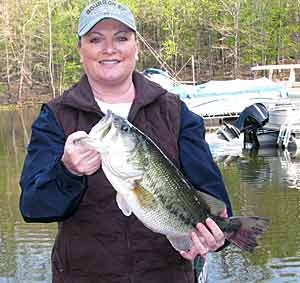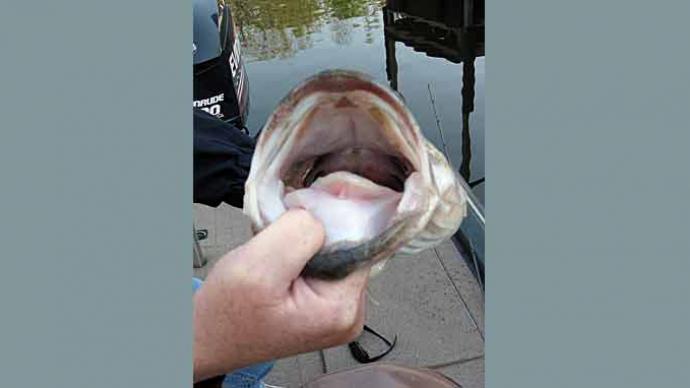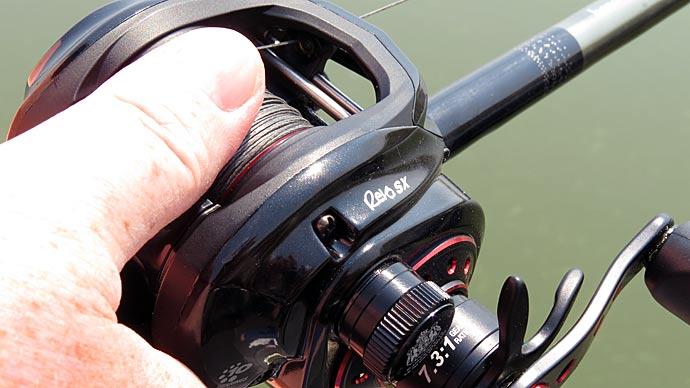
In a previous article, I began to tell a story about fishing swimbaits. The crux of the article was that swimbaits are for more than just the spawn; they can and will produce all year long.
It's tough to mention everything a person needs to know about using swimbaits at one time, so after discussing in detail the aspects of wintertime and springtime swimbaits, it's time to get to the heart of the opportunity - summertime and fall fishing.
To fish swimbaits in the summer requires extra planning and at least a couple of different baits tied on at all times. Two factors dictate which baits I use and when I use them.
Summertime means increased temperatures and increased boat traffic. I will use the Basstrix and Osprey swimbaits in the early morning in shallow water, but as the traffic increases and the sun rises, I switch to an Optima swimbait and search out and target the fish in deeper water. You can throw an Optima half a country mile and fish it deeply.
As usual for swimbaits, I use a 7-foot Muskie-type Berkley Series One rod, with no less than 25-pound line and a high-speed reel, the single most crucial element to my rig. Many times, when you slow roll the bait across the bottom, you'll suddenly lose the feel of the bait. It's just not there! That's when you must reel fast and get ready to set the hook because that trophy fish has taken the bait and is swimming it back to you. Again, you must get control of the line before setting the hook, so the reel speed is crucial.
During the summer, the bite seems more like a reaction bite. But, it's a deep reaction bite. This time of the year, many lakes are being drawn down to provide irrigation water. This creates a current in the main lake that the shad will follow. As luck would have it, baitfish only sometimes find themselves alone. Where the shad go, so do the trout, and guess what? There is always a big bass around waiting to enjoy a trout dinner. Bass love trout. What can I say? It seems they will go completely out of their way to eat them.
My methods for fishing deep summer water are to find the unusual bottom structures, most likely in very deep water, and then plot my attack. For example, I like to find deep rock piles, throw the swimbait to the opposite side of the rocks, count it down, and slowly bring it back over them.
You'll first feel the weight of the bait as it reaches the bottom, and then you will feel the rocks. Like I said before, you may not feel the strike or even anything at all. But when you lose feel, reel up and set hard. The bass will find your bait on the rocks, and as soon as it breaks free of the structure, the bass will slam it.
Most of these fish will be found 50 feet down and even deeper this time of year. So if you have a hump that is down 60 or 70 feet, and the water is a couple of hundred feet deep all around it, you will find big fish in a virtually untouched area. These are the fish you are after, the giant fish that haven't seen a lure.
The little, run-of-the-mill fish will be closer to the bank near more shallow humps because that's where they need to be. Bait is more plentiful in the shallows, and the smaller fish gravitate to those areas. Big fish only need to eat once a week, especially if the meal is a tasty trout. The trout go deeper in the summer and provide the big bass with all the food they need.
Another method I use is to take a big Optima swimbait, park my boat right over a deep hump, let the bait fall to the bottom, and hop. It's like a big spoon. The bass will react to the bait, and the action can be incredible.
Moving towards late summer and early fall, lake stratification and oxygen content dictate where fish will be found. Many times, the oxygen levels this time of year are not good. So, the shad are going to seek out any areas of moving water; anywhere they can find more oxygen.
The bass act lazy, don't seem to want to chase much, and begin to act like middle-of-the-winter fish. This is the time to find the old river channels, look for balls of shad and trout, and experiment, experiment, and experiment some more to find those big bass that will feed on the trout. Your fishfinder becomes an essential tool this time of year to isolate the different species on the screen and count down the swimbait to the right level.
Later in the fall, as the water cools, and becomes more oxygenated, the shad, and therefore the trout, will move back to the shallower water. At this time of year, I like to use the swimbaits on windy days when the light penetration isn't as good. The bass begin to prepare for winter and enjoy stalking big trout, trapping them close to shore.
Never give up on swimbaits in the fall. They may not produce a ton of strikes, but the fish you boat could be the largest bass you have ever latched on to. Good luck!
Reprinted with permission from Bass West Magazine




